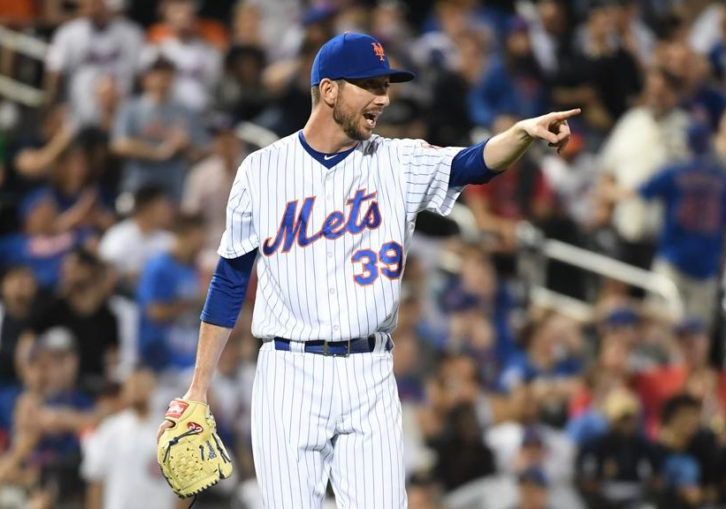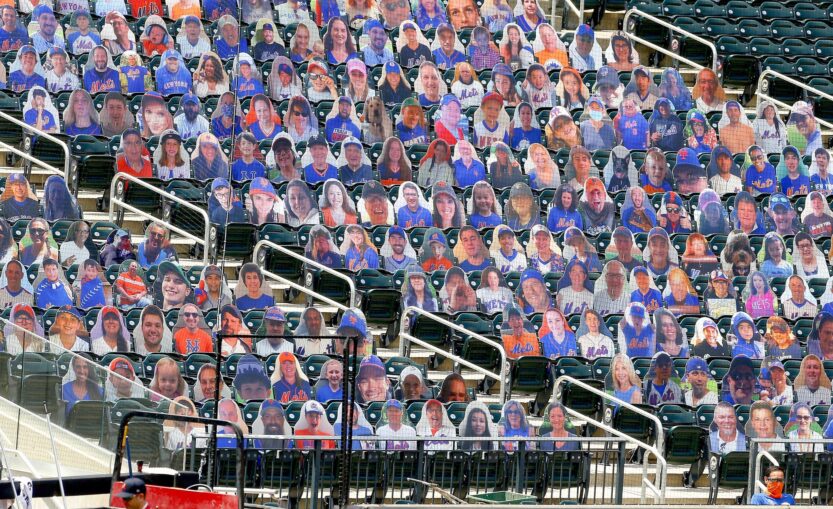
Miraculously, as I write this, we are only a few days away from the completion of the 2020 Major League Baseball season, one that many people never thought would start, let alone finish.
From the petty and antagonistic “negotiations” between MLB and the MLB Players Association, to the constant reminder of the real risks of COVID-19, everything was up in the air until the last moment. It wasn’t over until it was over.
Finally, a “compromise” was imposed by Rob Manfred and MLB, with a take-it-or-leave-it rope attached. The players took it, and held out the threat of a lawsuit, just to keep anyone from getting comfortable.
Forthwith, here’s my report card of the rule changes that were proposed and the ones that eventually took place this season.
Three-Batter Minimum Rule:
When I first heard this, I thought it might be okay, mostly because I don’t like the constant parade of relievers to pitch to one or two batters. Once I saw this rule in action, it did the opposite of grow on me. It shrunk. And kept shrinking. I hate it.
It doesn’t solve any problems and it contributes problems for the manager. See photo of Jerry Blevins above pointing out how ridiculous this rule is. This was supposed to speed up the game, which has creeped up in average game length over the past forever. It hasn’t and won’t, and even if it did, so what? The game is fine as it is, and doesn’t need to be shorter in my opinion.
Grade: F
Increased Roster Size
Evolving from 30 to 28 to 26 (ended up sticking at 28 after many COVID-19 related postponements for the Marlins and Cardinals, primarily. [Version 1.0 Roster size increase from 25 to 26, with 28 players in September] roster rules tweaks–increasing the suggested team roster from 25 to 26, with an expansion to 28 in September (down from the usual 40).
This is long overdue. The 25-player roster has been inadequate for years and getting more so every year. The original plan to go to 26 was fine, and then the adjustment to start the season with 30 was spot on. I would have preferred to keep it at 30 all season, though, because there was so much roster turnover due to positive COVID-19 test results and unexpected opt-outs. I also like the taxi squad idea.
Grade: B+
Universal DH
I’m old enough to remember baseball before the DH. In 1973, this rule was introduced in the American League and Yankee Ron Blomberg was the first official DH in MLB history. As a National League, specifically a Mets fan, I was glad my team and league would continue to play real baseball, nine players vs. nine players like it wasn’t drawn up by Abner Doubleday.
I have resisted any thought of the Universal DH until the past year or two. The main driver for me to consider it is strictly selfish. Yoenis Cespedes, JD Davis, Robinson Cano, and Pete Alonso, to be precise.
My Metsmerized colleague, Steve Schaeffler, opines: “The issue of whether or not the Designated Hitter will be extended in the National League for 2021 and beyond is the most impactful rule facing the Mets organization for the immediate future. With the current construction of the Mets roster, the loss of the DH is going to force some tough decisions by the new front office as they try to figure out how to use their depth at certain positions to their advantage without the luxury of getting that depth the at-bats the DH provided in 2020.”
Grade: A- (minus for historical reasons)
Extra Inning Rule:
I don’t like it at all. I actually like the increasing tension of extra inning games. I understand the need for it during COVID-19, but not once that threat is gone.
Grade: D
Seven-Inning Doubleheaders:
No. We’re not in the minor leagues or Little League. Baseball is nine innings, nine players, 90 feet between bases, three outs, three strikes. Part of the beauty of baseball is mathematical. It was fine for 2020 to reduce exposure, but that’s the last time I want to see this.
Grade: D
Injured List Changes.
In 2020, both position players and pitchers get the 10-day (previously 15) injured list and the 45-day (previously 60) injured list. Moving forward, 15-day and 60-day, plus seven-day concussion protocol is fine. Teams will always find a way to misuse these lists.
Grade: B
Expanded Playoffs:
Aaaargh! Sixteen out of 30 teams in the playoffs. Teams with losing records. What are they doing?
This is not the NHL. I want fewer teams not lots more. I really hope that the fact that the two best teams ended up in the World Series does not convince anyone that the 16-team system will somehow reward the best teams in the future. It won’t.
Grade: D
Draft Changes (Five Rounds, Pushed Back 2021 Draft)
The five-round draft was bizarre, although it made sense as an emergency measure, especially given the lack of the minor league season. Moving it later in the year is a good idea for 2021 and beyond, although I will miss having the short-season NY Penn League in Brooklyn with freshly signed college players and Dominican League graduates. The good news is that Brooklyn will now be the Double A farm team of the Mets, so I will get to see top prospects who are near ready for The Show.
Grade: C
Cardboard Cutouts and Fake Crowd Noise:

I loved the cardboard cutouts, especially at Citi Field. The first time Jeff McNeil‘s dog Willow’s cutout got hit by a home run ball, it brought the whole idea into focus as a way to bring back some of the fan emotion of the game.
The idea by many teams to give the fan a ball after a ball hit their cutout was genius.
Crowd noise was less enjoyable, but some teams used it to great effect by selecting quite appropriate sounds.
The Fox network’s decision to create virtual fans was a disaster. Creepy as possible. Just no.
Grade: B
Two-way Players/Position Player Pitching:
For the past season or so, MLB has been trying to control the use of position players as pitchers in light of the increase in legit two-way players such as Shohei Ohtani and Brendan McKay. They have proposed restrictions on how position players can be used on the mound, such as allowing them to pitch only if a game were in extra innings or if the player’s team were ahead or behind by at least seven runs.
Players can be designated a “two-way player” only if they accrue at least 20 major league innings and at least 20 major league games started as a position player or DH (with at least three plate appearances in each of those games) in the current season or either of the 2019 or 2018 seasons.
The logic behind this is to link it with restrictions on the number of pitchers allowed on the roster to avoid teams having too many available pitchers and thus the potential for longer games. (See the three-batter minimum.)
Due to the COVID-19 situation, the rule reverted back to unrestricted usage of position players as pitchers. Hallelujah! Doesn’t everyone love this? Why would you limit it ever? And I love two-way players. That should totally be encouraged moving forward. Hopefully, this will disappear for 2021 and be rejected in the next CBA in late 2021.
Grade: A
Trade Deadline Moved from July 31 to August 31:
Obviously a COVID-19 only situation, due to the length and start time of the season. But why not move it further back permanently to give teams more time to decide how to approach the trade deadline. Now that there is only one real trade deadline (after getting rid of the waiver trade business), why not line it up with the postseason eligibility deadline of August 31?
Grade: A
Due to the unprecedented nature of this 2020 season, it made sense for Major League Baseball to do a lot of experimenting with some of their rule changes this year.
Moving forward the expectation is that the game will continue to evolve, as some of these changes will stick and others are surely to be experimented with in the future. Stay tuned for another article coming soon, where we will delve into the future of baseball in regards to both the written and unwritten rules.















